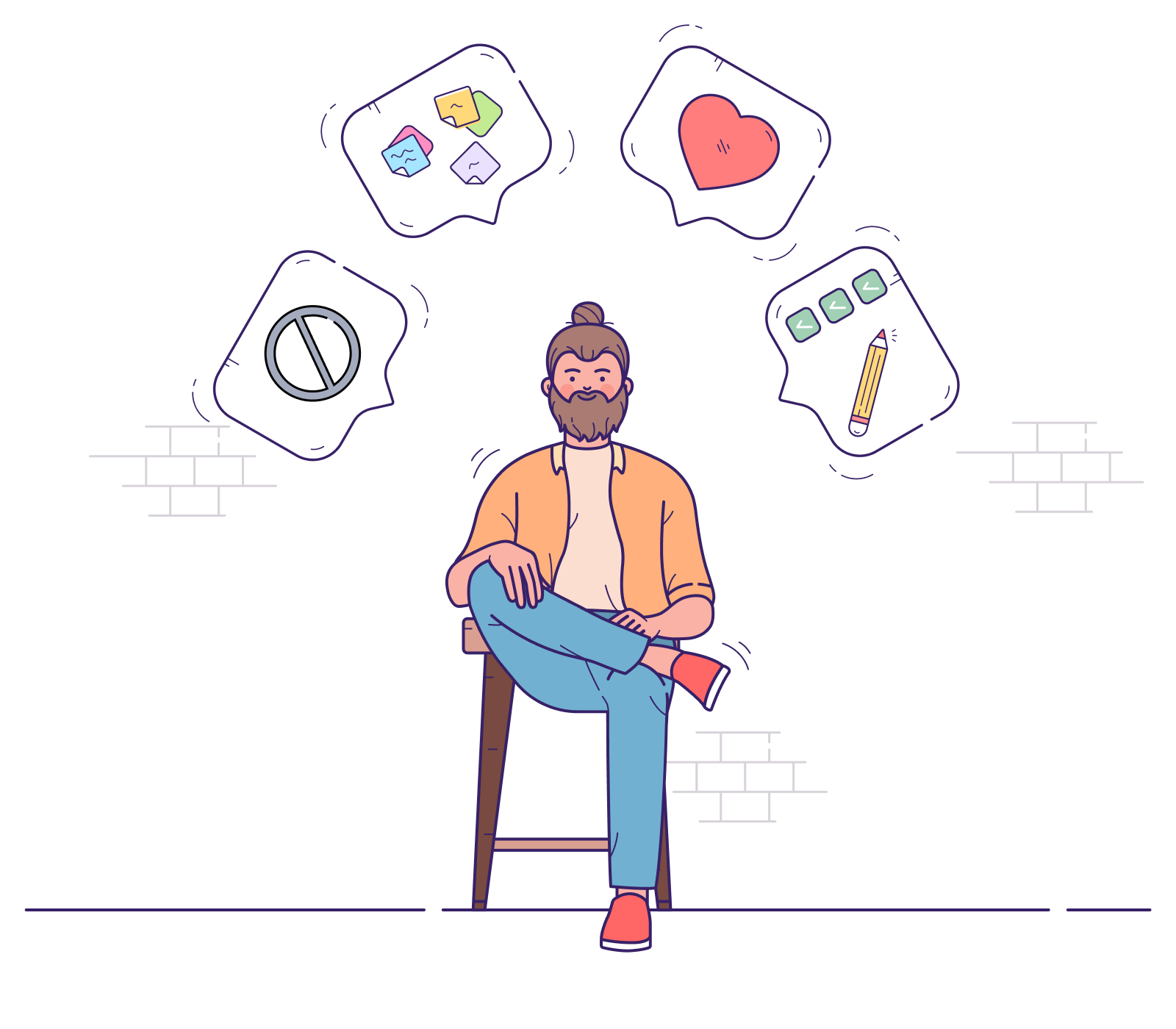Why The 4A Model?
We built this because we realized that just understanding ourselves better through the Better Life Framework does not mean that we are ready to take action. We may know why we think in a certain way, but moving forward requires an emotional breakthrough.
Understanding and processing experiences often require us to navigate through four distinct stages driven by our emotions, which we call the 4As: Avoidance, Awareness, Acceptance, and Action.
What Are The 4As?
Understanding the 4As will help you understand and empathize with yourself and others to know what questions to ask that will guide and nurture progression towards action.
There is no standard time it takes to go through each stage - it depends on the individual and their experiences.
| Stages | Avoidance | Awareness | Acceptance | Action |
|---|---|---|---|---|
| How It Feels | Emotionally reactive and self-protective | Guilty about reaction and still feeling negative | Hesitant but trying to understand / empathize. | Ready for change and growth |
| Behavior | Avoidant and defensive | Acknowledging reaction but rationalizing behavior | Open to new perspectives. | Proactively seeking and applying advice |
| Examples | "How could they do this to me!" | "That probably wasn't the best way to handle it but it was justified." | "Maybe it isn't as I thought it was." | "What can I do to move forward?" |
| Helpful Questions | How do I protect myself? | How do I feel about the situation? | How did I get into this situation? | What are some things I can do? |
How Can I Apply This Into My Life?
In our search for support during challenging emotional times, we often face the dilemma of not having someone to confide in. Our loved ones, though well-meaning, may lack the necessary emotional bandwidth or be too personally involved to offer the impartial support we need. We often find that they may ask us questions that we're not ready to answer, or make statements that seem dismissive of our reality.
So, recognizing that gap, we've created "Talk It Out", an AI companion designed to help you process your emotions.
Check It OutIf you want to learn about each A in more detail, read on below.
1. Avoidance
In the Avoidance stage, there's a marked unwillingness to engage with the situation, often accompanied by reactive behavior. This stage is characterized by statements like "I don't know why, it just is," leading to feelings of victimization.
Asking "How do I protect myself?" helps us take steps to remove ourselves without making the situation worse.
Most likely we won't be talking about our experience while we're still triggered by the situation. Loved ones may try to engage, but most likely we'll be short tempered and impatient with them. We appreciate presence and care, even if we are not receptive.
In this stage, its important to get time and space away from the perceived trigger and start sitting with our feelings.
2. Awareness
During Awareness, we start recognizing our emotional responses to the situation, often focusing on ourselves and still feeling negative about the situation.
Although there's an acknowledgment of the reactions, there's reluctance to change. "How do I feel about this?" is a helpful question in identifying and articulating emotions.
It's very common for loved ones to try to solve our problem once they feel like you are starting to process your emotions. Don't allow them to. Any solutions offered while we're going through these stages will most likely not be accepted, as we still don't feel heard. Find an un-biased, willing listener.
In this stage, you're more likely to seek knowledge that understand and process your emotions.
3. Acceptance
Acceptance involves recognizing that our initial reactions might not be the most constructive and developing empathy for others involved. We have a willingness to change, though often with hesitancy because we are not sure what is the right way to tackle the situation without re-igniting the tension.
"How did I get to this situation?" helps in understanding the factors that led to the situation in the first place. By identifying the underlying issues, we can be more certain that taking action is a safe thing to do.
The most important thing a loved one can do here is to allow you to tell your story of how you think your experiences have influenced your response to this situation, and offer encouragement and support to explore deeper.
In this stage, its useful to use tools to help you to apply new perspectives to the situation.
4. Action
The Action stage is where we're ready to seek and accept advice, showing openness to solutions and different viewpoints. This stage is characterized by a preference for relatable advice and an active effort to apply learnings.
The question "How have others solved this problem?" is crucial for processing on how we can take action.
We would love to get advice from our loved ones at this time as we want to know from trusted sources how to improve the situation and be better.
In this stage, go to a community to help you take action.
